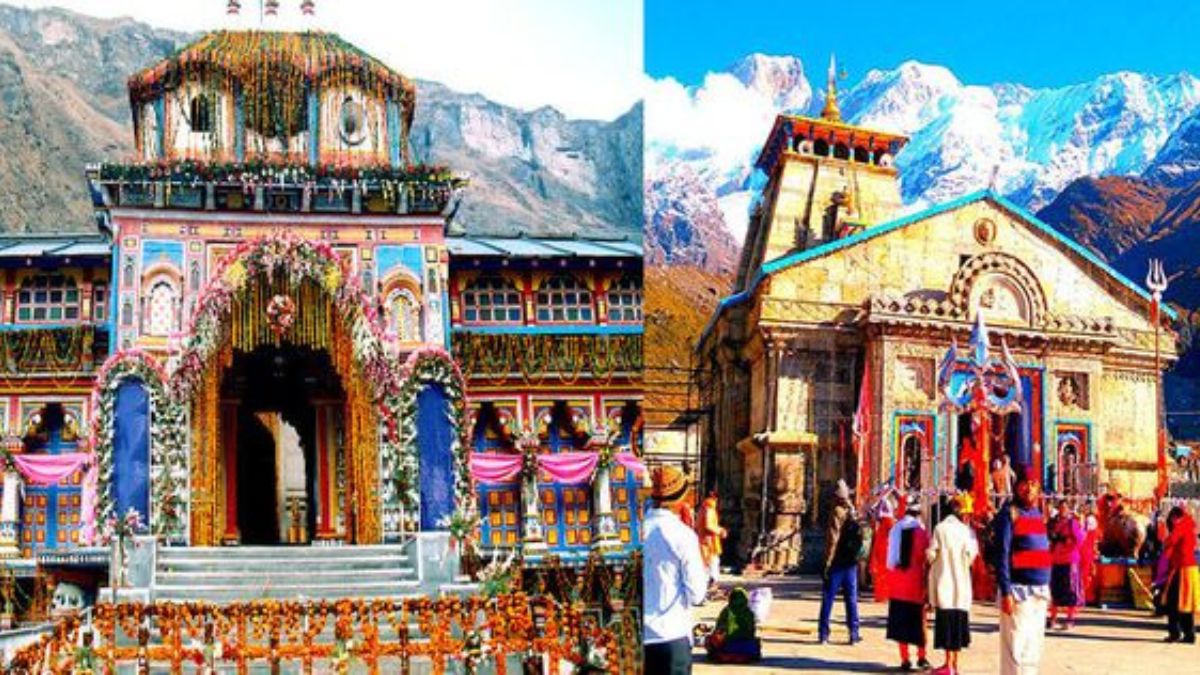Planning to go on spiritual pilgrimages has deep religious meaning for Hindus. One such pilgrimage journey that is very important for Hindus is the Chardham Yatra. This pilgrimage journey takes in four sacred shrines located throughout the Himalayas. Herein, we’ll dive deeper into its details, such as the length of trip duration and destination list.
About The Chardham Yatra
This sacred pilgrimage tour to four sacred Hindu sites located in Uttarakhand, India, can also be known as “journeying to the four abodes of gods”, featuring visits to Chardham Temples that include Yamunotri, Gangotri, Kedarnath and Badrinath. Many believers view it as purification from sin and ultimately leading them toward spiritual awakening and salvation.
Char Dham Yatra begins on the auspicious day of Akshay Tritiya of Chaitya month, and the temples close during Bhai Dooj.
You can select to start from either Delhi, Haridwar, Rishikesh, or Dehradun – among them is Delhi, which connects directly to all other major cities for convenience.
Duration of Chardham Yatra
Chardham Yatra journeys can last between 10-12 days depending on the mode of transportation used and weather conditions; on average, pilgrims typically start from Haridwar or Rishikesh and travel along a circuitous route until reaching all four shrines. When considering opting for the Chardham Yatra By road, you can expect 12-14 days to complete the Yatra, considering all the travel times, trekking, sightseeing, and more.
You can also consider booking the Chardham yatra by helicopter service. Such services have quickly become an attractive alternative for pilgrims with time or physical restrictions who wish to complete the pilgrimage more quickly, typically within four or five days. Helicopter services are offered for each shrine, offering flexibility when planning one’s itinerary.
When Does The Chardham Yatra Start?
Chardham Yatra typically takes place from April to November when the weather is optimal, and shrines can be reached easily; it is also the best time to visit Chardham Yatra. Winter season proves more difficult as these sacred sites become impassible due to snow cover.
Therefore, temple doors close during that season as deities are worshipped within their winter dwellings. The monsoon season is not the right period to embark on the Yatra since the region experiences high rainfall and the possibility of landslides.
Essential Tips For A Safe Chardham Yatra
1. Plan Early:
Begin planning your Chardham Yatra as early as possible to account for factors like weather, transportation and accommodation needs when making informed decisions about this journey.
2. Weather Awareness:
Although Yatra takes place during the summer months, weather in the Himalayas can often be unpredictable. Hence, you should prepare accordingly; make sure that warm clothing and rain gear are packed, along with staying informed on forecasted forecasts for when you travel.
3. Physical Prep:
The Chardham Yatra involves trekking and altitude variations. Make fitness your top priority before undertaking this journey, especially if preexisting health issues exist or concerns have been voiced to healthcare providers before embarking.
4. Pack Essentials:
Make the most out of every trip you go on by planning to bring necessities like comfortable clothing, sturdy footwear, a first aid kit with necessary medications and personal hygiene items, as well as keeping a small backpack for day excursions.
5. Cultural Sensitivity:
Respect local customs and traditions by dressing modestly, adhering to temple etiquette and remaining mindful in your actions so as not to jeopardize the sanctity of the pilgrimage experience.
6. Document Verification:
Before visiting any shrine or religious center:
- Ensure you bring with you all necessary identification documents and permits to ensure a smooth visit.
- Make sure all specific requirements for that temple or center have been fulfilled, as well as having all required authorizations in order.
- Besides that, complete the Chardham Yatra registration.
7. Cash and Connectivity:
Always bring sufficient cash with you, as ATMs may be limited in remote areas. Inform your family of your itinerary, and carry a mobile phone that provides excellent network coverage.
8. Altitude Acclimatization:
Gradual acclimatization to altitude changes is vital. Take frequent breaks, stay hydrated and listen to your body so as to prevent altitude sickness.
9. Respect Nature:
The Himalayan region is ecologically sensitive. To contribute to conserving this pristine environment, avoid littering, respect the local flora and fauna, and practice eco-friendly methods by adhering to eco-friendly practices that contribute.
10. Be Prepared:
Plan for unexpected circumstances, such as roadblocks or weather disruptions. Also, keep your itinerary flexible to allow for any necessary modifications or alterations that arise.
See, more: Into the Wild: Hiking Expeditions in Himachal Pradesh
Conclusion
The Chardham Yatra is more than just physical travel – it’s an experience in itself – providing pilgrims an opportunity to connect their faith to stunning Himalayan landscapes while experiencing something spiritual.
While its duration and route might change slightly from pilgrim to pilgrim, its goal always remains the same – seeking divine blessings while cleansing one’s soul en route through Yamunotri, Gangotri, Kedarnath and Badrinath. With proper planning, you can have an extraordinary pilgrimage journey that transcends physical boundaries into something unmatched and spiritual.
Also, check: Photography Tips for Your Dubai City Tour in 2024
